We Joined Lamborghini at Daytona: Here’s Everything to Know About Its New Race Cars

Lamborghini entered a new EVO2 generation of the Huracán GT3 race car at the Rolex 24 Hours of Daytona at the end of last month, where former F1 driver Romain Grosjean also made his debut with the factory team. This year’s endurance contest at Daytona also marked a new era of motorsport, as Porsche, Cadillac, Acura and BMW competed in the Le Mans Daytona hybrid (LMDh) prototype class—an all-new category.
Lamborghini plans to join the LMDh field next year. For the 2023 competition, though, the marque brought a quintet of GT3 EVO2 racers to run in two classes: GTD Pro and GTD. As the latest—and perhaps last—full-race Huracán variant, the EVO2 builds on the proven performance of the road-going Huracán STO’s naturally aspirated 640 hp V-10 power train and rear-wheel-drive configuration. New aerodynamic components include a functional roof-mounted snorkel air intake that replaces previous side scoops to feed 10 electronically controlled individual throttle bodies, which bolt atop the 10-cylinder engine with only four screws to allow for quicker service. Additionally, this year’s regulations stipulated safety improvements to the roll cage, and Lambo also added carbon-Kevlar honeycomb side panels and new brakes.
More from Robb Report
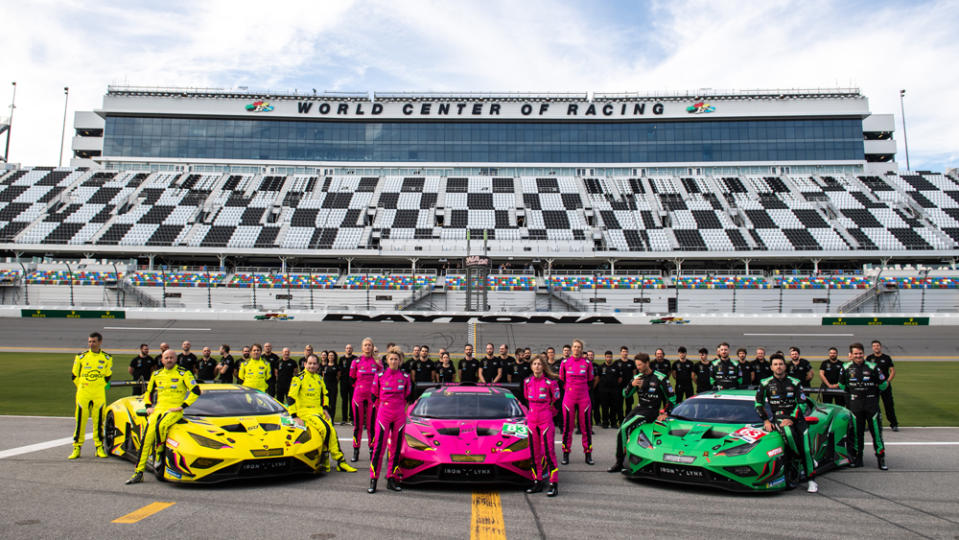
“Lamborghini gave us a very good baseline setup after the testing in early December of last year,” Grosjean told Robb Report ahead of the race’s start. “It’s a very different car from what I’ve been driving recently, being a GT car versus a single-seater, so first I had to get used to it. And then it’s for a 24-hour race, so being very comfortable and having a very predictable car is key,” said Grosjean. “You’re not necessarily looking for the last hundredth, thousandth of a second to go the fastest, you’re looking for a car that can do whatever you want over a long period of time.”
In Lamborghini’s suite overlooking the track, Stephan Winkelmann, the automaker’s CEO, cautioned that the first race for such a revised car typically set the stage for further development throughout the year’s full International Motor Sports Association (IMSA) calendar.
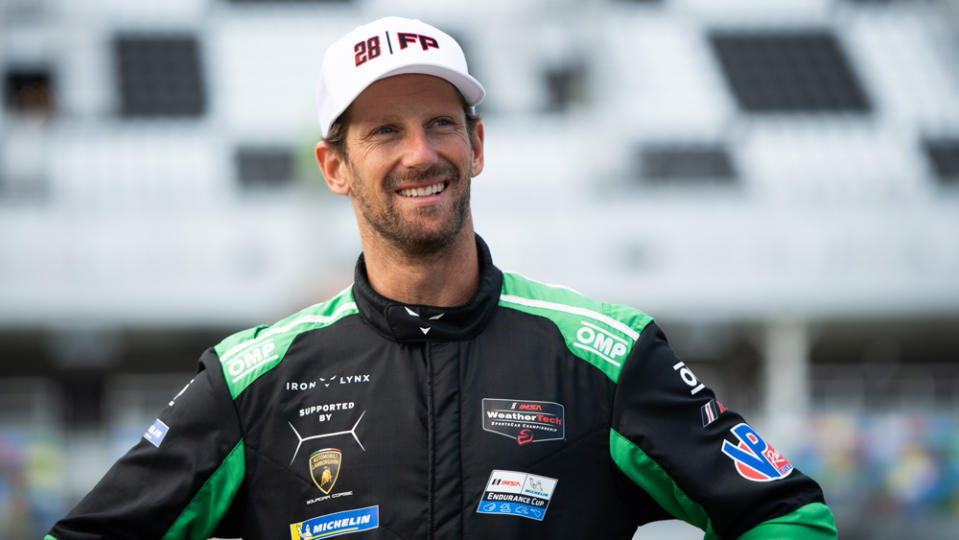
“It’s getting more and more difficult for those who are defining the balance of performance to have a car rightly positioned at the very beginning,” explained Winkelmann. “The new cars, they are performing less than the ones which were already racing in the last year. So today, it’s very difficult to say how competitive we’re going to be, but what my engineers are telling me is that this is something which will get better as we continue with the season.”
After the full 24 hours of racing at Daytona were completed, Winkelmann’s predictions held true as Grosjean’s No. 63 car, in which he split driving duties with Mirko Bortolotti, Andrea Caldarelli and Jordan Pepper, finished fourth in its class and a lap behind a tight race between the winning Mercedes-AMG GT3 and Chevrolet’s Corvette C8.R.

Grosjean will continue racing the Huracán GT3 EVO2 in the IMSA WeatherTech SportsCar Championship series, with the next stop at Sebring in March, while also contributing to the testing of Lamborghini’s forthcoming LMDh racer. This new project presents unique challenges to Lamborghini’s Squadra Corse motorsport division due to the highly specific nature of the hybrid regulations for the power train and chassis.
“He is a guy who is coming from Formula 1,” Winkelmann said of Grosjean. “He’s used to the hybrid system, he’s used to cars with a lot of downforce, so he will also be useful in speeding up the development and helping us to speed up the development of the LMDh program.”
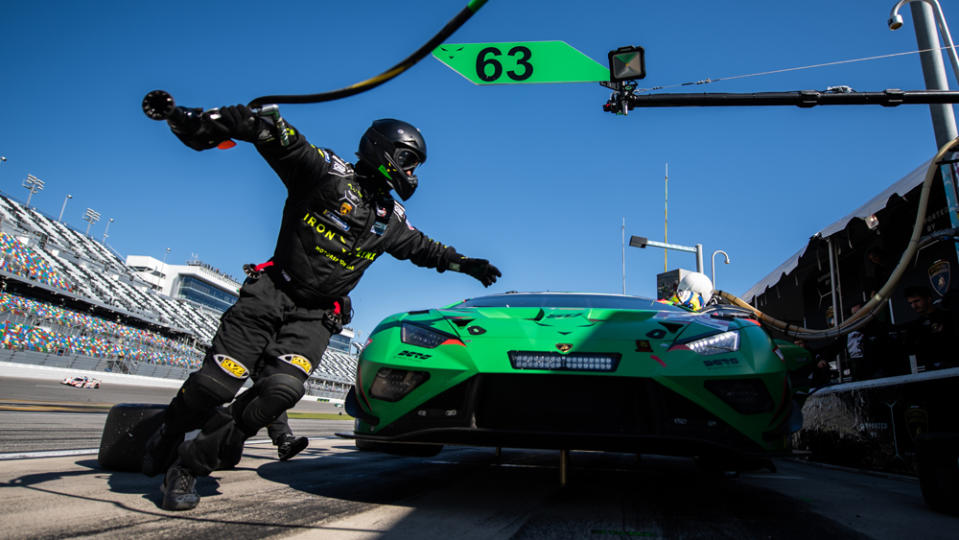
Lamborghini faces the same obstacle as other manufacturers developing LMDh cars, namely mating engines to the components supplied by Bosch, Williams Advanced Engineering and Xtrac that the new class employs to make up the hybrid power train. And the choice of chassis is limited to those provided by either Oreca, Dallara, Ligier or Multimatic. Winkelmann explained that Lamborghini selected Ligier due to the latter company’s headquarters in Abrest, France (less than 500 miles from the Raging Bull’s base in Sant’Agata Bolognese), as well as the outfit being a comparable size for working closely with Squadra Corse.
Fellow Volkswagen AG holding company Porsche fielded two of its new LMDh 963 race cars at Daytona, powered by an updated version of the 918 Spyder’s twin-turbocharged V-8 engine. But despite Lamborghini sharing the Urus SUV’s twin-turbo V-8 with Porsche’s Cayenne, however, Winkelmann made very clear that the common power plant will not end up in the Raging Bull’s LMDh race car.
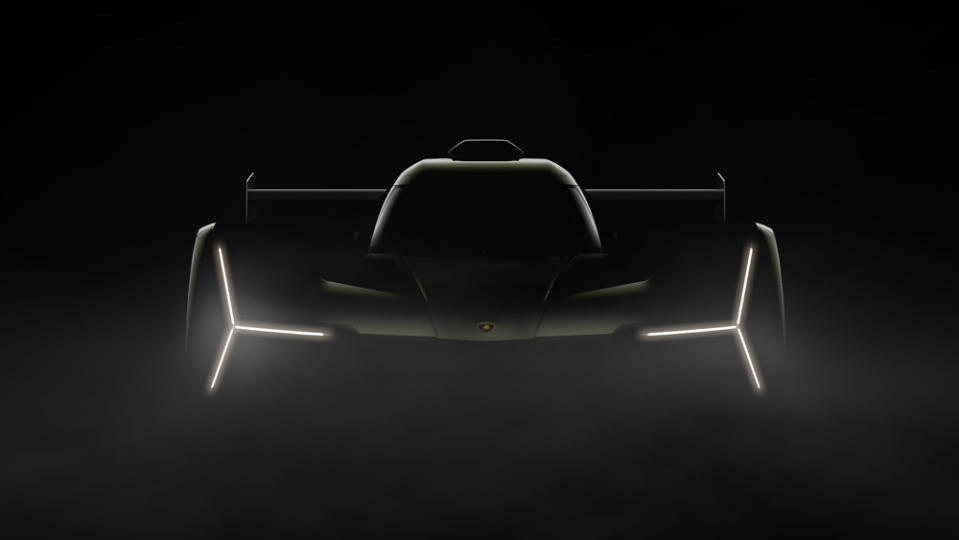
“The V-8 is our own development, this has nothing to do with other LMDh cars and not with Porsche, which I think is key,” stated Winkelmann. “It’s about creating, out of the best platform, the best possible DNA with Lamborghini, and this is what we did in a perfect way. So the blending of our capabilities together with the capabilities of the group . . . the result is outstanding.”
At Daytona, Porsche Penske Motorsports retired one 963 after around 21 hours of racing, reportedly due to engine failure. The other managed to finish the full 24 hours, though around 44 laps off the pace of two Acuras and one Cadillac that topped the LMDh podium.
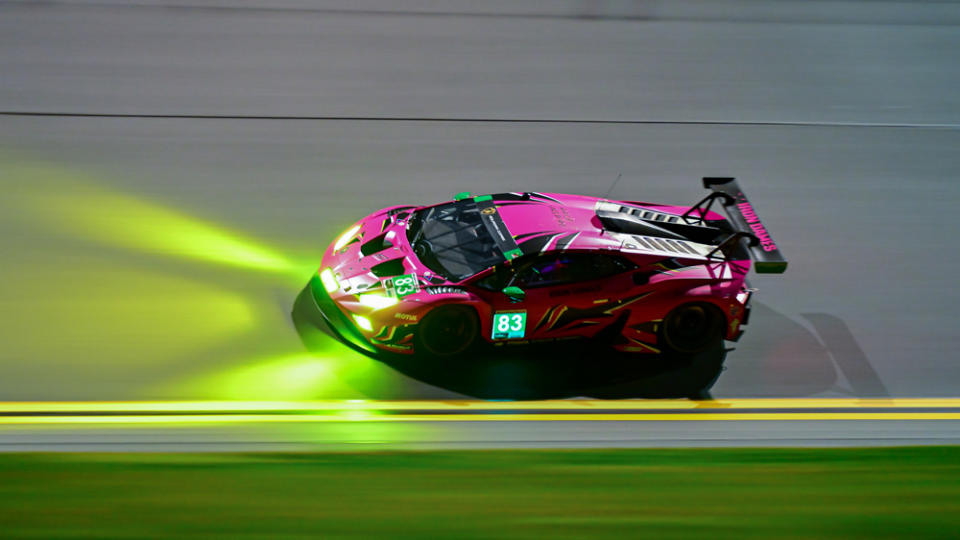
Lamborghini’s history includes far less motorsport competition than the likes of Porsche, or even its closest rivals over at Ferrari, but Winkelmann sees the GT and LMDh efforts as serving both the interest of current buyers and the development of future technologies. Winning, as Lambo did over three straight GT class victories from 2018 to 2020 at Daytona, certainly helps along the way.
“A brand like ours has to battle against each other or against other brands, this is something which also the customers expect more and more,” Winkelmann admitted. “For us, it was important to get both feedback from development, which we could transfer into street-legal cars, but also to have more and more customers involved in motorsport.”
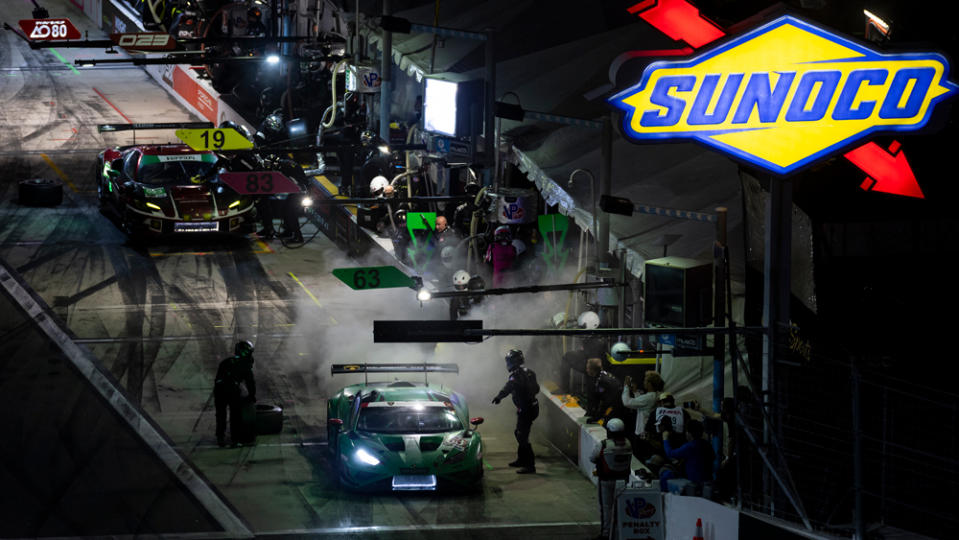
Concrete details on Lamborghini’s LMDh car remain scant, but the marque’s well-publicized plans for the next decade of production cars includes a fast pivot to hybridization followed by full electrification in the next few years. Fitting into that timeline, the LMDh prototype will begin testing by early this summer.
Meanwhile, nothing on the track sounded nearly as good as the Huracán GT3 EVO2’s endangered V-10 wail echoing up the banked walls and grandstands at Daytona. Lamborghini began EVO2 customer deliveries in late 2022 and current GT3 Evo Huracáns can also be upgraded to the new spec. In the meantime, both the Huracán and forthcoming LMDh prototype, with contributions from Grosjean, should help Sant’Agata Bolognese continue to develop the technology that can keep Lamborghini roaring along into the hybrid-electric endurance-racing era inaugurated this year at Daytona.
Click here for more photos of Lamborghini at the 2023 Rolex 24 at Daytona.
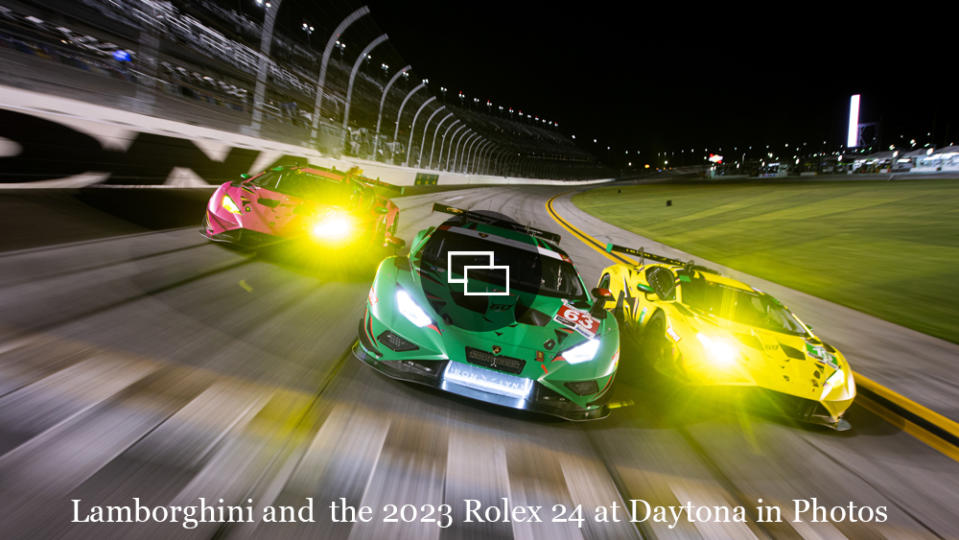
Best of Robb Report
The 15 Best Travel Trailers for Camping and Road-Tripping Adventures
The Chevy C8 Corvette: Everything We Know About the Powerful Mid-Engine Beast
Sign up for Robb Report's Newsletter. For the latest news, follow us on Facebook, Twitter, and Instagram.


